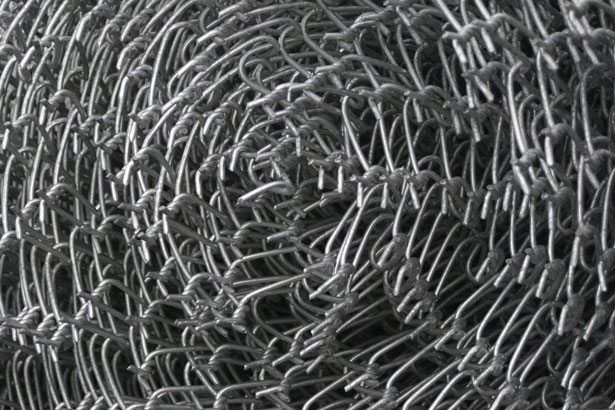
How Is Chain Link Fence Fabric Made?
Chain link is the most popular type of fence around the world. It's durable, cost effective and relatively easy to install. Whether you call it chain link fencing, diamond mesh or something else, you've probably seen a lot of it in your city or town.
That's not surprising, given that there are hundreds of thousands of feet of it installed in nearly every country in the world. But have you ever considered how it's made? Let's take a closer look at how chain link fence fabric is made.
Weaving Chain Link Fence Fabric
As you can see in this video from chain link weaving machine manufacturer Bergandi, the process of manufacturing chain link fence fabric is very similar to using a knitting or weaving machine.
The wire is fed in one side, bent and spiraled into the adjacent wire.
The top and bottom of the chain link mesh fabric, also known as the selvedge, is then either twisted to create barbs, or bent over to create knuckles.
Chain link fence machines also roll up the mesh as it is made, into rolls of 25 or 50 feet. Heavier mesh products made from thicker wire or higher mesh rolls are usually sold in 25 foot rolls, simply so it is easier to move around on site.
Uniform Results and Fast Manufacturing
The best thing about weaving chain link mesh on modern chain link machines is that it's a fast and relatively easy way to produce uniform results.
Of course, setting up the weaving machine for the right aperture size, wire type mesh height takes some time, so most companies who make chain link mesh don't do short runs of chain link fence fabric. Which means if you need something different from standard products, you might have to wait a while.
Various Wire Types and Materials
Most modern chain link fence weaving machines can manufacture chain link mesh from various materials, including galvanized wire, stainless steel wire, PVC coated wire and so on.
While it is possible to make chain link fence fabric from aluminum, it's not possible on all chain link fence fabric weaving machines, as it needs a slower and gentler weaving speed than tougher wire types.


